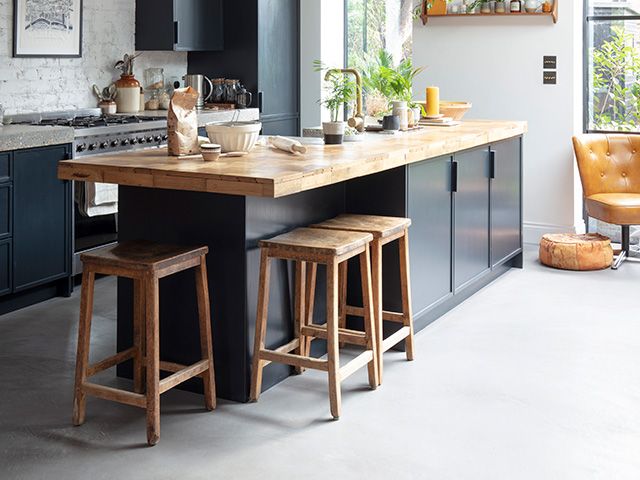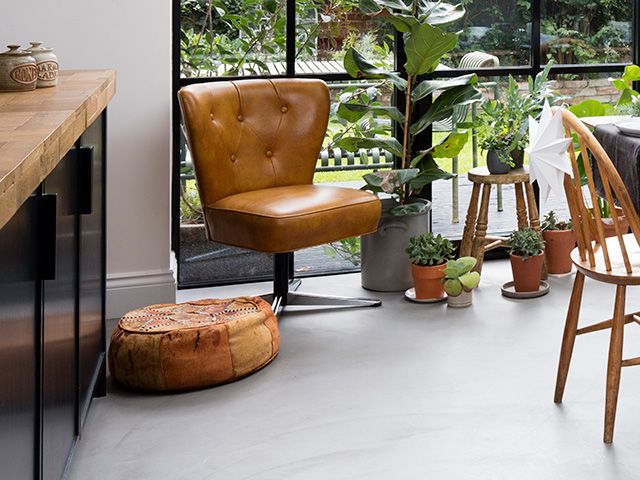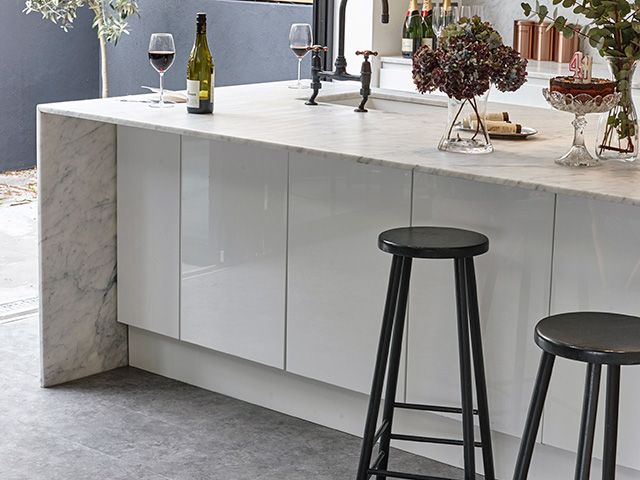
Concrete floors: what you need to know
Polished concrete offers a sleek, modern alternative for your flooring – but how easy is it to install and how much does it cost? We find out…

Image: David Giles
Where once concrete would only be seen in industrial or commercial buildings, it’s now become a super trend in home interiors as an alternative to wood, stone or tile flooring.
Sleek and seamless, poured concrete floors offer an on-trend industrial texture that can set the tone for a modern, open-plan space.
Read on to find out more about how concrete floors are installed.
Poured concrete floors

Image: David Giles
Concrete, as you’d imagine, is an extremely tough and durable material once installed. The most common version of a concrete floor in a home will be polished smooth. It will need regular sealing, much like cement tiles require, to ensure it remains free from staining.
While concrete may be naturally cold underfoot, it’s compatible with underfloor heating – perfect for an open-plan kitchen space.
A poured concrete floor is not a DIY undertaking – it’s best left to the professionals. It’s a process that needs to be done in an empty space, such as a new build, extension or full room renovation, as your doors, partition walls and built-in furniture should all be built on top of it.
Poured concrete floors can take up to a month to fully cure, which is key in ensuring its long term stability. This will also be affected by the weather, so you’ll need to build in a realistic timeframe with your contractor ahead of installing a concrete floor.
If you’re looking to put a concrete floor in an existing space, you’ll so need to know the building can support the extra weight of 200kg per square metre. Consult a structural engineer if not.
Expect to pay anywhere from £80 to £150 per square metre.
Micro-topping
Think of microtopping as the hardwood veneer of concrete flooring. This can be achieved with hand application, without the need for heavy machinery and upheaval of your home. The resulting floor will be far less heavy and they dry quicker.
Microtopping will by and large be a cheaper option, but you can still expect to see prices of £80 per square metre.
Resin floors
An alternative to poured concrete, but that can achieve a near-identical effect, are modern resin floors. It’s a more flexible material, which means it can be laid over existing timber or mixed flooring and won’t crack.
It’s also waterproof and easy to clean, and is more resistant to scratches, which can be a big problem for polished concrete floors. You’ll also find that resin is warmer and more comfortable to walk on than concrete.
However, resin does have a less natural appearance than concrete, and you’ll need to find a supplier who you’re sure can achieve the look you’re after,
Concrete effect

Image: Warm concrete luxury vinyl tile flooring, Lifestyle Floors
If you’re looking to achieve the look of a poured concrete floor, but with minimal fuss and cost, concrete-look alternative may be just the ticket. However, whether you choose a concrete-effect porcelain tile or a cement-inspired LVT, it’s hard to faithfully recreate the seamless look associated with poured concrete flooring.
This concrete-effect LVT from Lifestyle Floors retails from £29.95 per square metre.
Are you lusting after a concrete floor in your home? Tweet us @goodhomesmag or post a comment on our Facebook page to let us know.






